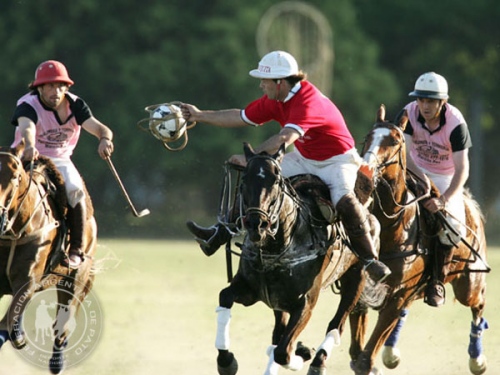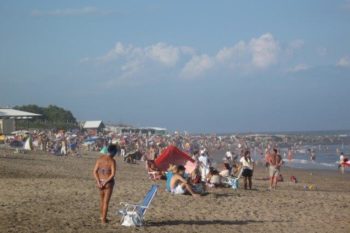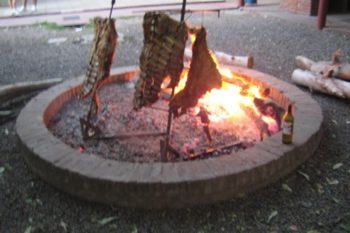Football –or soccer, as it’s known in some parts- may be Argentina’s most popular sport but pato is the country’s official national sport.
Pato (Spanish for duck) dates back to the early 17th century, albeit not in the form it is played nowadays. A chronicle written in 1610 describes a game played on horseback in which two teams fight for the possession of a hide sack with handles with a live duck inside. I can only imagine the poor thing’s sheer terror. Years later, authorities banned this game because it was deemed too violent. I’m sure the web-footed community breathed a sigh of relief.

It was only in 1938 that the ban was lifted. Mr Alberto de Castillo Posse wrote the rules of modern pato and designed the special saddle and the ball with handles used today. An executive order declared pato the national sport in 1953.
Historians came to the conclusion that the sport of pato was invented in the Pampas, as no evidence of it was ever found in Spain –from where the Conquistadors came- and it is a fact that the local tribes did not play it before the Conquest because the horse was introduced by the Spaniards.
So it was that the live duck was replaced by a white leather ball, 40 centimetres in diameter, with six equidistant handles. Each team consists of four mounted players on the field.
There are strict rules regarding equipment –for example, players must wear white breeches, a riding crop and a helmet-, fair play and sportsmanship: reckless riding or zigzagging in front of another rider are penalized. There are two referees on horseback and an umpire sitting outside the field, one timekeeper and a scorekeeper. The only restrictions regarding horses are that they must be over 150 centimetres in height and be tame.
The object of the game is to score goals. In order to do that, players must pick up the pato –ball- from the ground and pass it to his teammates while trying to get close enough to the basket to score. They are only allowed to use their right hand to pick up and pass the pato, which takes a lot of skill and strength. Each match consists of four to six periods of eight minutes each.
The video below is from the 69th Open in 2011.
Much like polo, pato uses a handicap system to rate players, except it is called ventaja (advantage). There are tournament matches around the country from February to December. Pato clubs are relatively far from urban centres because of the amount of space needed: the field itself is rectangular in shape and measures 180 (up to 220) metres by 80 (up to 90) metres, with a 5 metre security area on each side and a 20 to 30 metres behind each goal. Clubs have more than one field, as well as stables.
Every year, the Abierto Argentino de Pato (the Argentinean Open) brings together the top teams, which fight for the National Championship in a exciting display of skill on horseback.
Source: Federación Argentina de Pato y Horseball
Read more




